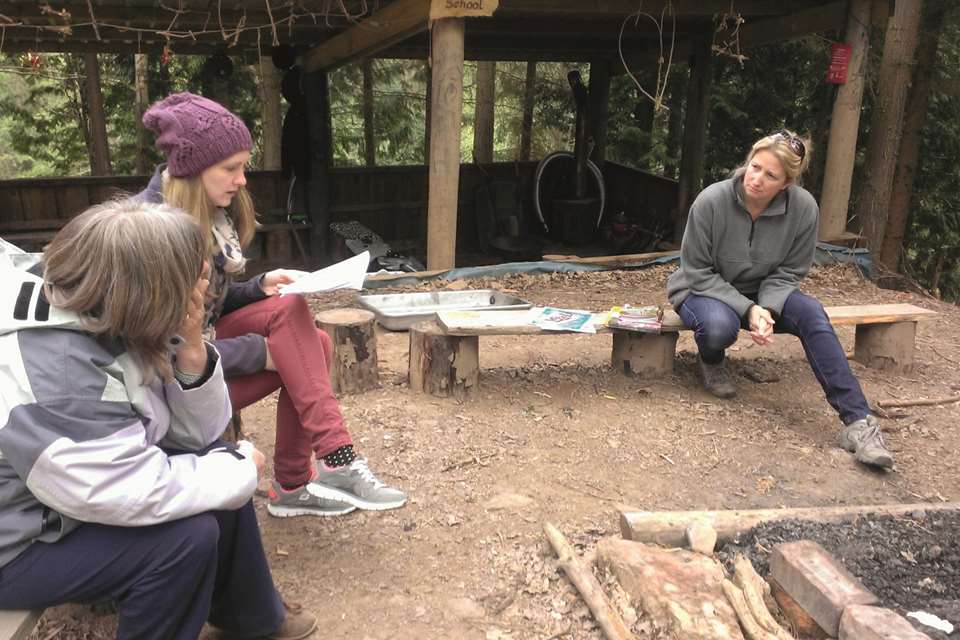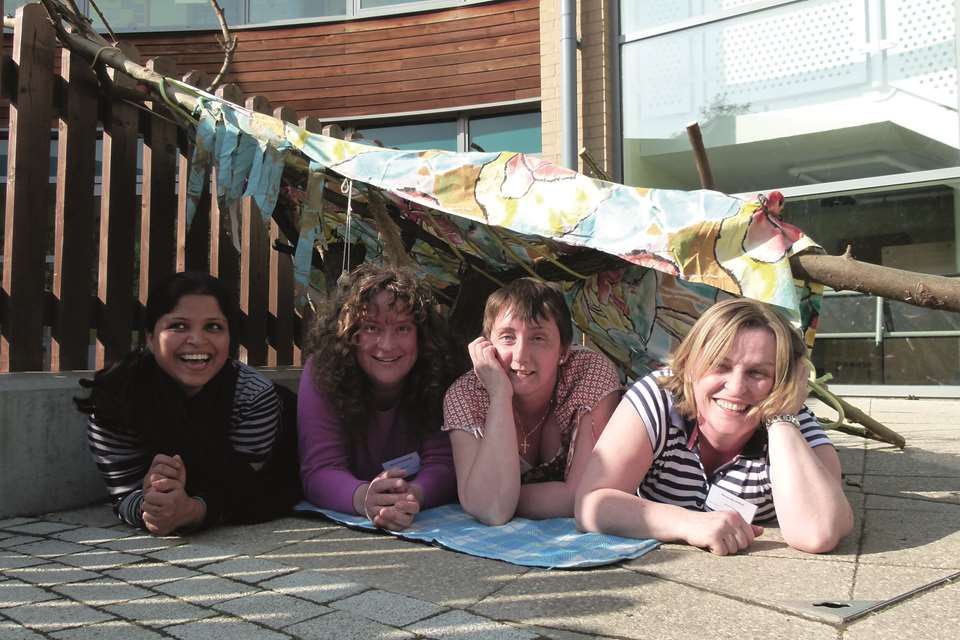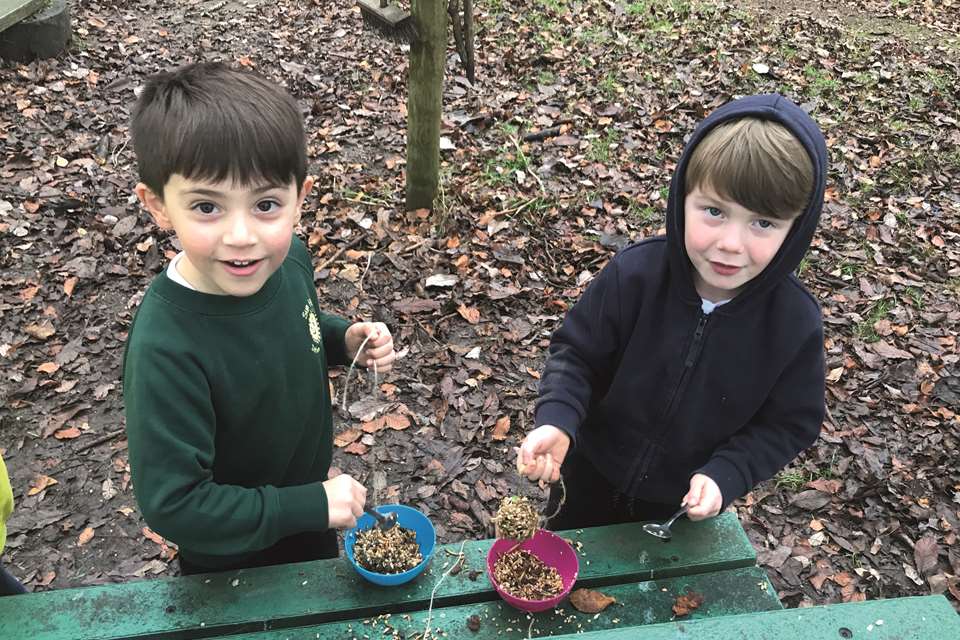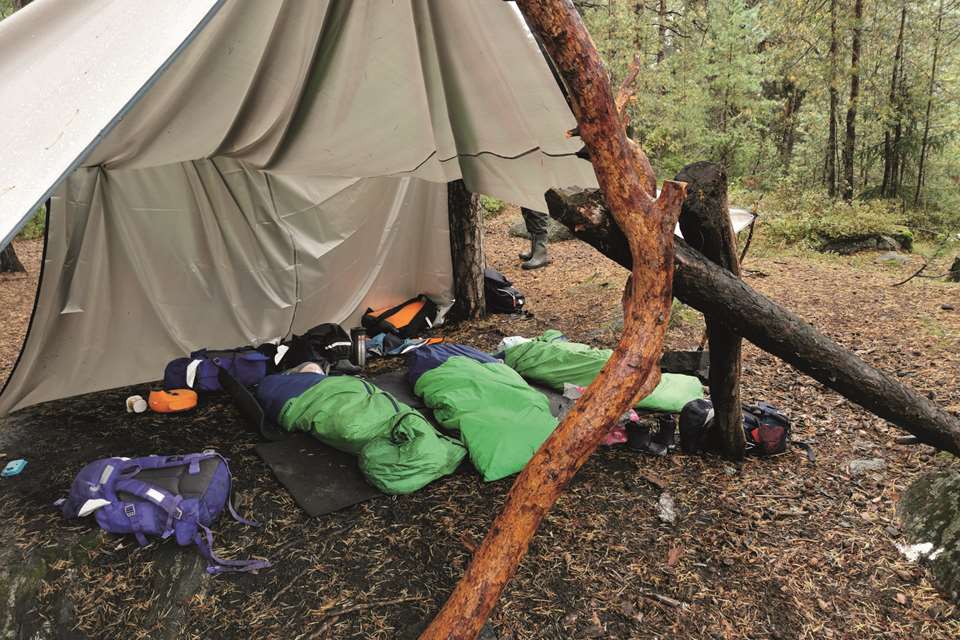Your outdoor calendar: February
By Julie Mountain
Tuesday, February 2, 2021
Activities and tasks to help get your children outside this month. By Julie Mountain

A new project
INSTALL A WATER BUTT
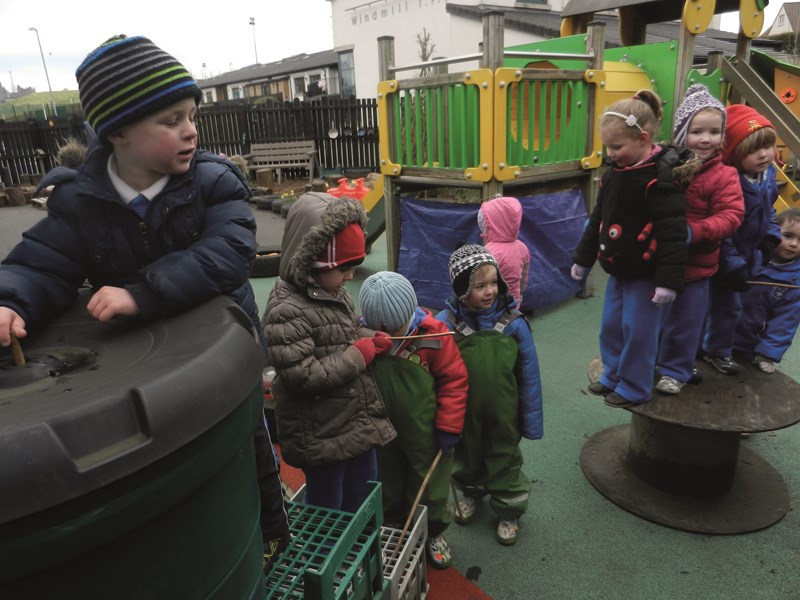
If you don’t already have a way of harvesting rainwater, there are a number of ways to collect it – starting by just leaving mud kitchen pots and pans out overnight. However, a water butt is a more permanent method, and will provide on-demand water for children without sending your water meter into overdrive.
Water butts come in many sizes and are easily attached to a downpipe using the kit that comes with them. If you’re pushed for space, a narrow water butt will fit into a tight corner – but if you have the room for a large one and can afford it, you won’t regret having an almost never-ending source of free water.
Most water butts have a simple twist tap mechanism at the bottom, which children will soon master the use of. It can be useful to keep a bowl or watering can below the tap, so water doesn’t drain away if it’s left open by accident.
Most of the water collected in the water butt is likely to end up in your mud lab or sandpit, but encourage children to use it to water mature plants too. Just take care that seedlings aren’t ‘killed with kindness’!
Be aware of the minor risks associated with water butts:
- Ensure the lid of the water butt is kept on at all times – check when you buy it (or receive a donation) that the lid can be turned to a ‘lock’ position.
- Remind children not to drink the water from the water butt – a simple visual symbol next to it should help too.
Maintenance
IT’S TIME TO…
Get ready for rain. It may not be the most exciting job, but do check your gutters, drainpipes, gulleys and grates to remove leaf mould and dirt (and probably a few small toys) before the heavier rainfall of early spring.
Nature watch
LOOK OUT FOR…
Buds and stems: in February, snowdrops will be in full bloom, and the stems of daffodils, bluebells and other spring bulbs will begin to emerge. Show children what to expect and send them out with magnifiers to identify the bright green stems of new shoots.
Ice: Examine icy puddles – can you tell by looking whether the ice is the same thickness in every puddle? Jump in the puddle to break up the ice and lift the pieces out to play with. Where else can children spot ice forming? Look up and around as well as on the ground!
‘Our Garden in 2021’
FOR THE RECORD…
Don’t forget to use your Our Garden floorbook to capture children’s activities and the changing face of the garden in February. Look ‘outwards’ too – ask children to notice changes in the trees, plants and skies you can see from your setting, as well as those within it.
Activity
MAKE ICE PENDANTS
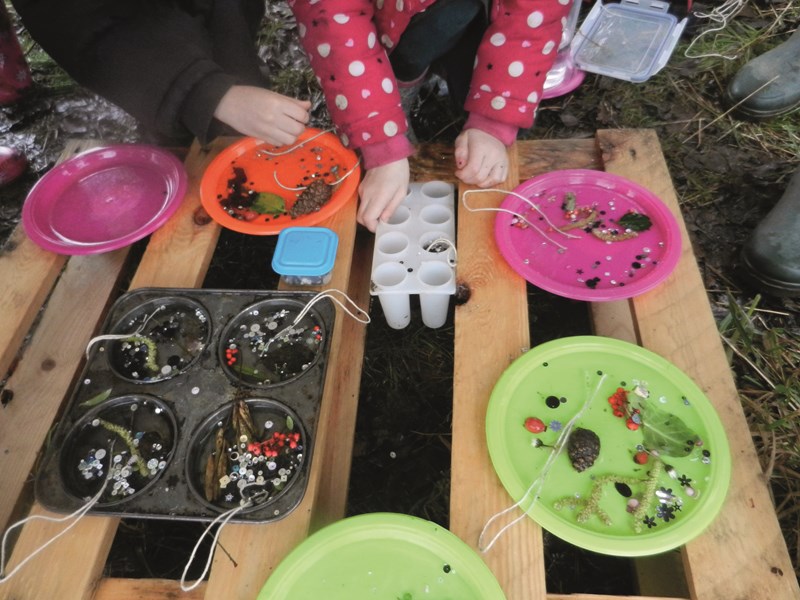
Water is a fascinating element and its properties provide year-round interest for young scientists. You’ll need a period during which you expect several days of very cold weather to make ice pendants – or else (quietly) cheat by making the ice ‘moulds’ and then sneaking them into the freezer overnight. Make these in the morning so that you leave the maximum amount of freezing time before checking them the next day.
Equipment: You’ll need a variety of shallow dishes or trays, small and lightweight natural or man-made objects, and long lengths of string.
To make the pendants:
- Ask children to scavenge for objects to freeze. Talk to them about the process of freezing and what ice feels like to the touch. The scavenged objects should be small and light so that their weight doesn’t pull the string out of the frozen pendants.
- Lie the shallow dishes onto the ground in a place where they can remain undisturbed overnight.
- Place one end of a long piece of string in the dish – the other end should be outside of the dish.
- Children should fill their dish or tray with water, almost to the brim. The ice in shallow dishes will freeze more quickly – compare a puddle to a water tray filled with water overnight!
- Carefully place the found objects or toys into the water. Children might like to arrange them into a pattern or create a random picture. Place a plastic, mirrored or wooden letter into each tray to help identify whose is whose.
- Leave the trays undisturbed overnight and check on them in the morning. If they have frozen, it should be possible to display them by hanging them from a fence or branch using the long string.
- Watch how light refracts through the ice – what do the children notice? How long will the ice last for? What will happen to the objects trapped in the ice?
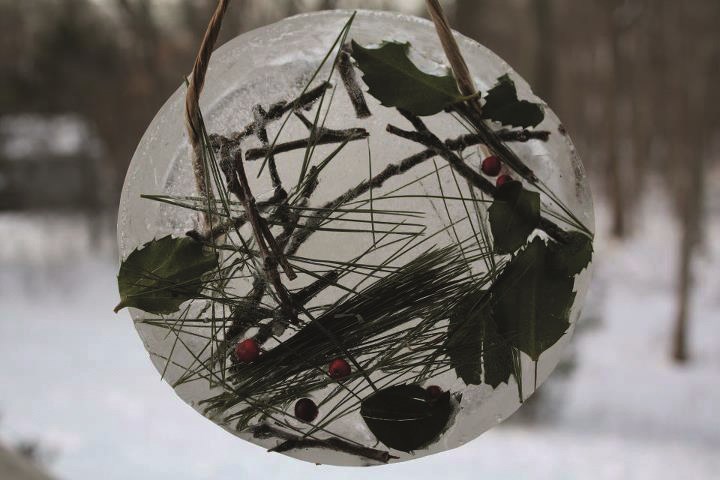
Looking ahead
MAKE PLANS TO…
Participate in the United Nations’ World Wildlife Day on 3 March. Visit the website for information, events and materials: www.wildlifeday.org
Seek out and celebrate daffodils on St David’s Day, 1 March. St David is the patron saint of Wales and the daffodil is a famous symbol of Wales. Find daffodil poems and paintings ready to share on the day.
Resources
BEG, BUY OR BORROW…
Wellington boots: Ask for donations of Wellington boots to ensure every child can get outdoors in the rain, snow, mud and whatever else February throws at you.
Christmas lights: February days can still be dark and gloomy. Why not keep the Christmas lights up, but in the garden rather than indoors? Check they are suitable for outdoor use and brighten up shady corners or help winter trees sparkle – encouraging children to play out or play out for longer on inclement days.
Story to share
 Before Morning by Joyce Sidman, illustrated by Beth Krommes
Before Morning by Joyce Sidman, illustrated by Beth Krommes
Stunning woodcut-style illustrations and a poetic, lyrical story tell the tale of a child who wishes for a ‘snow day’ so that she can spend time with her busy parents.
Although the story is set in the USA, children will recognise features and scenes from their own lives, including parks, shops, busy streets and roosting pigeons. Outdoors is portrayed as beautiful, spacious and liberating, and the whole book is a wintry treat.
Risk assessment
WATCH OUT FOR…
Slips and trips: The cold weather of February means children and adults must wrap up warmly to be able to tolerate being outdoors for any length of time. However, bulky clothing and unfamiliar terrain make navigating outdoors more difficult.
Help reduce slips, trips and pulled muscles by leading a five-minute warm-up when children go outdoors. Use the garden and its features and fixtures: hopping over benches, jogging along pathways and ducking under or through play equipment. A few minutes of warming everyone up in this way will enable children – and adults – to play outdoors for longer.
Damaged branches: Wintry high winds can loosen dead or brittle branches, so remove them if they look likely to cause harm if they fall in the next storm.
Download Now

